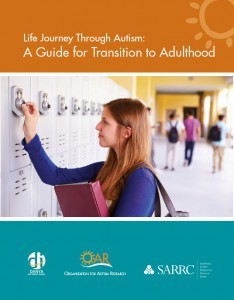Navigating the Transition to Adulthood
June 05, 2018
By: Organization for Autism Research
Categories: Resource Spotlight
The transition from adolescence to young adulthood can give rise to a wide range of emotions, from anxiety to excitement. For students with autism, anxiety may outweigh excitement as they may face greater challenges than their typical peers in attending college, navigating social situations, or figuring out a potential career path.
To help reduce the stress and anxiety that comes along with this transition, parents, educators, and self-advocates alike can make use of individualized transition planning resources. OAR’s “Life Journey Through Autism: A Guide for Transition to Adulthood” offers support and information for that planning.
“Adulthood is the defining period of one’s life, and it is our accomplishments as adults about which we are generally most proud. It shouldn’t be any different for the person with an autism spectrum disorder,” notes Peter Gerhardt, Ed.D., OAR Scientific Council chair, who was the principal author of the guide.
The guide is designed to give parents and educators an overview of the transition process, including:
“A Guide for Transition to Adulthood” is a great, all-encompassing resource for educators, parents, counselors, and students. OAR hopes that you will use this resource for yourself and share it with others in the autism community.
The guide is available as a hard copy or for downloading in English or Spanish.